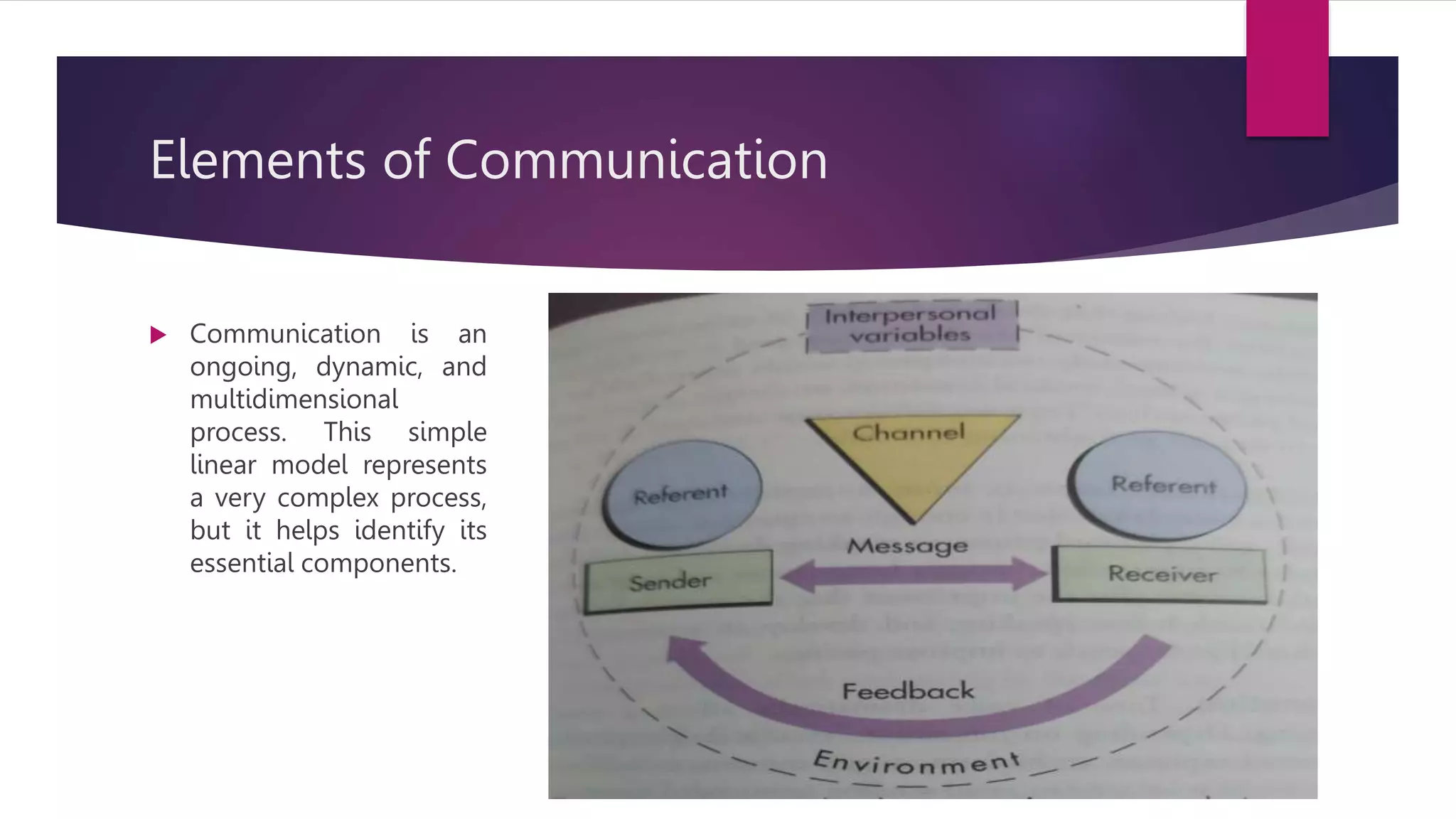This document provides an overview of communication, including definitions, levels, elements, forms, factors influencing communication, effective communication methods, barriers to communication, and principles of therapeutic communication. It defines communication as a two-way process involving the transfer of information between a minimum of one sender and receiver. The different levels of communication discussed are intrapersonal, interpersonal, transpersonal, small group, and public. The elements, forms, and principles of communication are also summarized.




































